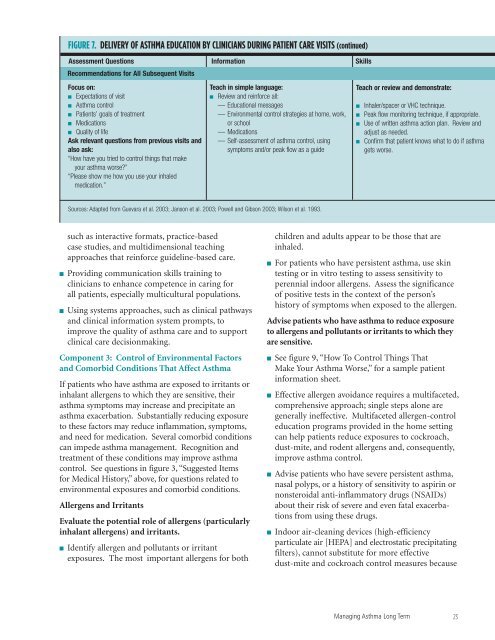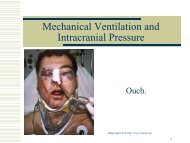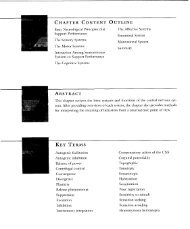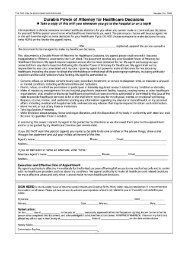Guidelines for the Diagnosis and Management of Asthma
Guidelines for the Diagnosis and Management of Asthma
Guidelines for the Diagnosis and Management of Asthma
Create successful ePaper yourself
Turn your PDF publications into a flip-book with our unique Google optimized e-Paper software.
FIGURE 7. DELIVERY OF ASTHMA EDUCATION BY CLINICIANS DURING PATIENT CARE VISITS (continued)<br />
Assessment Questions In<strong>for</strong>mation Skills<br />
Recommendations <strong>for</strong> All Subsequent Visits<br />
Focus on:<br />
■ Expectations <strong>of</strong> visit<br />
■ <strong>Asthma</strong> control<br />
■ Patients’ goals <strong>of</strong> treatment<br />
■ Medications<br />
■ Quality <strong>of</strong> life<br />
Ask relevant questions from previous visits <strong>and</strong><br />
also ask:<br />
“How have you tried to control things that make<br />
your asthma worse?”<br />
“Please show me how you use your inhaled<br />
medication.”<br />
Teach in simple language:<br />
■ Review <strong>and</strong> rein<strong>for</strong>ce all:<br />
— Educational messages<br />
— Environmental control strategies at home, work,<br />
or school<br />
— Medications<br />
— Self-assessment <strong>of</strong> asthma control, using<br />
symptoms <strong>and</strong>/or peak flow as a guide<br />
Teach or review <strong>and</strong> demonstrate:<br />
■<br />
■<br />
■<br />
■<br />
Inhaler/spacer or VHC technique.<br />
Peak flow monitoring technique, if appropriate.<br />
Use <strong>of</strong> written asthma action plan. Review <strong>and</strong><br />
adjust as needed.<br />
Confirm that patient knows what to do if asthma<br />
gets worse.<br />
Sources: Adapted from Guevara et al. 2003; Janson et al. 2003; Powell <strong>and</strong> Gibson 2003; Wilson et al. 1993.<br />
such as interactive <strong>for</strong>mats, practice-based<br />
case studies, <strong>and</strong> multidimensional teaching<br />
approaches that rein<strong>for</strong>ce guideline-based care.<br />
■ Providing communication skills training to<br />
clinicians to enhance competence in caring <strong>for</strong><br />
all patients, especially multicultural populations.<br />
■ Using systems approaches, such as clinical pathways<br />
<strong>and</strong> clinical in<strong>for</strong>mation system prompts, to<br />
improve <strong>the</strong> quality <strong>of</strong> asthma care <strong>and</strong> to support<br />
clinical care decisionmaking.<br />
Component 3: Control <strong>of</strong> Environmental Factors<br />
<strong>and</strong> Comorbid Conditions That Affect <strong>Asthma</strong><br />
If patients who have asthma are exposed to irritants or<br />
inhalant allergens to which <strong>the</strong>y are sensitive, <strong>the</strong>ir<br />
asthma symptoms may increase <strong>and</strong> precipitate an<br />
asthma exacerbation. Substantially reducing exposure<br />
to <strong>the</strong>se factors may reduce inflammation, symptoms,<br />
<strong>and</strong> need <strong>for</strong> medication. Several comorbid conditions<br />
can impede asthma management. Recognition <strong>and</strong><br />
treatment <strong>of</strong> <strong>the</strong>se conditions may improve asthma<br />
control. See questions in figure 3, “Suggested Items<br />
<strong>for</strong> Medical History,” above, <strong>for</strong> questions related to<br />
environmental exposures <strong>and</strong> comorbid conditions.<br />
Allergens <strong>and</strong> Irritants<br />
Evaluate <strong>the</strong> potential role <strong>of</strong> allergens (particularly<br />
inhalant allergens) <strong>and</strong> irritants.<br />
■ Identify allergen <strong>and</strong> pollutants or irritant<br />
exposures. The most important allergens <strong>for</strong> both<br />
children <strong>and</strong> adults appear to be those that are<br />
inhaled.<br />
■ For patients who have persistent asthma, use skin<br />
testing or in vitro testing to assess sensitivity to<br />
perennial indoor allergens. Assess <strong>the</strong> significance<br />
<strong>of</strong> positive tests in <strong>the</strong> context <strong>of</strong> <strong>the</strong> person’s<br />
history <strong>of</strong> symptoms when exposed to <strong>the</strong> allergen.<br />
Advise patients who have asthma to reduce exposure<br />
to allergens <strong>and</strong> pollutants or irritants to which <strong>the</strong>y<br />
are sensitive.<br />
■ See figure 9, “How To Control Things That<br />
Make Your <strong>Asthma</strong> Worse,” <strong>for</strong> a sample patient<br />
in<strong>for</strong>mation sheet.<br />
■ Effective allergen avoidance requires a multifaceted,<br />
comprehensive approach; single steps alone are<br />
generally ineffective. Multifaceted allergen-control<br />
education programs provided in <strong>the</strong> home setting<br />
can help patients reduce exposures to cockroach,<br />
dust-mite, <strong>and</strong> rodent allergens <strong>and</strong>, consequently,<br />
improve asthma control.<br />
■ Advise patients who have severe persistent asthma,<br />
nasal polyps, or a history <strong>of</strong> sensitivity to aspirin or<br />
nonsteroidal anti-inflammatory drugs (NSAIDs)<br />
about <strong>the</strong>ir risk <strong>of</strong> severe <strong>and</strong> even fatal exacerbations<br />
from using <strong>the</strong>se drugs.<br />
■ Indoor air-cleaning devices (high-efficiency<br />
particulate air [HEPA] <strong>and</strong> electrostatic precipitating<br />
filters), cannot substitute <strong>for</strong> more effective<br />
dust-mite <strong>and</strong> cockroach control measures because<br />
Managing <strong>Asthma</strong> Long Term<br />
23





